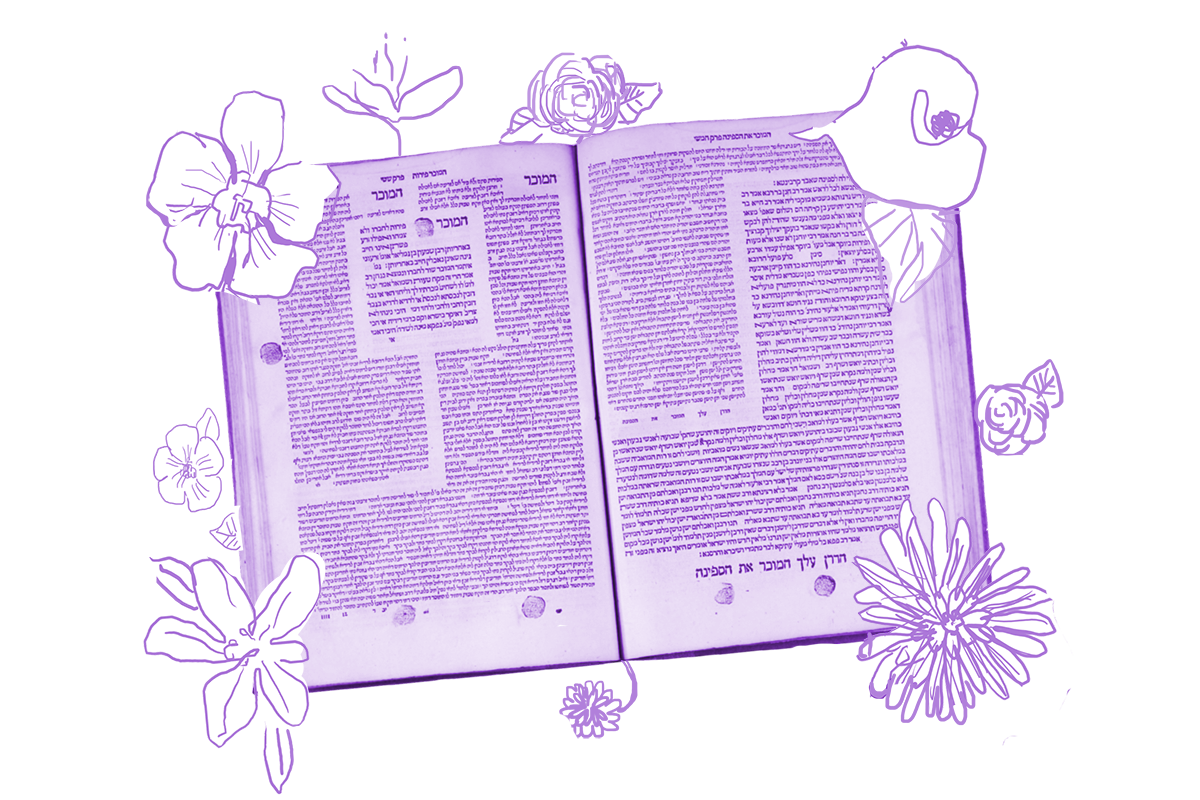Today’s daf continues the interrogation of a mishnah we encountered two days ago, which took us from discussing how a woman is acquired in marriage to how slaves are acquired by their owners. And just as with the first mishnah in this tractate, the Gemara immediately sets out to ground these laws in the Torah.
Turns out, that isn’t so easy. As we saw two days ago, it took the rabbis a couple of logical moves to establish the biblical basis for both a male and female slave being acquired through money. And on today’s daf, they have a similarly difficult time establishing that a slave can be acquired with a document. We won’t rehash all the blind alleys the rabbis go down before they manage to pull it off, but here’s a taste.
Ulla said: The verse states: “If he takes himself another wife” (Exodus 21:10). The verse juxtaposes (a Hebrew maidservant) to another (woman). Just as another can be acquired through a document, so too a Hebrew maidservant can be acquired through a document.
The Gemara’s first attempt is a verse referring to a female Israelite sold into slavery. According to the Torah, if the slave owner takes another woman as a wife, he cannot deny the slave food, clothing and other rights. Ulla’s contention here is that the Torah’s juxtaposition of a female slave and a wife leads us to conclude that just as a wife is acquired through a document, a slave can be as well. But the Gemara immediately pokes a hole in this theory.
With your help, My Jewish Learning can provide endless opportunities for learning, connection and discovery.
This works out well according to the one who says that the master writes the document of a Hebrew maidservant. But according to the one who says that the father writes it, what can be said?
The Gemara points out that there is a dispute about whether, in the case of a woman sold into slavery, the document establishing this transfer is written by the woman’s father or by her master. If it’s the master, then the comparison to a betrothed wife holds up — in both cases, the document is written by the man who acquires her. But if it’s the father, then the comparison doesn’t work and this verse therefore cannot be the basis of a general principle that a slave can be acquired by a document.
The Gemara continues in this vein for a while, but it’s worth pausing to consider the larger context. Tractate Kiddushin is ostensibly dedicated to kiddushin — or betrothal. But here we are in only the second mishnah and we have already shifted gears to talk about slavery. (Spoiler alert: The discussion of slavery is going to continue for a while.) Throughout this discussion, the parallels to marriage are inescapable. The rabbis talk about how women are acquired as wives and how they may subsequently acquire themselves back — i.e. through divorce or the deaths of their husbands. And they talk about how slaves are acquired (in a manner not too dissimilar from wives) and how they can acquire themselves back — i.e. become emancipated which, among other methods, occurs automatically in the case of the owner’s death, just as a wife is “re-acquired” upon the death of her husband.
This gestures toward an uncomfortable truth: The ancient institutions of slavery and marriage had certain key features in common. Both were defined by inherently unequal power dynamics, and both formalized the status of populations that were inherently vulnerable. So it’s not all that surprising that the rabbis would see them as analogous. But it’s equally true that while the rabbis didn’t overturn the essential power dynamics in either of these institutions, they did seek to blunt their sharpest edges.
As we saw back in Tractate Ketubot, wives very much lived under the command of their husbands — they were required to be sexually faithful (while the husband was not), any money they earned went to him (barring a deal to the contrary) and a husband could even annul his wife’s vows. But the rabbis also instituted a number of safeguards that served to protect the woman, including delineating a husband’s financial and other obligations and ensuring she had the means to support herself in the event of divorce or her husband’s death. The institution’s essential inequity remained, but its worst consequences were reined in.
Likewise with slavery, an institution we rightfully regard as indefensible today. Owners had clear obligations and limits on their power, which later Jewish authorities expanded until, in the medieval period, they eliminated slavery entirely. Similarly, modern halakhic authorities have gone even further than their predecessors in equalizing contemporary marriage.
While it may be more satisfying to see our contemporary moral sensibilities reflected in Judaism’s core texts, the reality may be that, as Martin Luther King Jr. observed, the arc of the moral universe is long. Moral progress takes time, sometimes painfully so. And though the rabbis didn’t take a stand against slavery and the inequities of ancient marriage in a way we might prefer, it’s possible to see them, in both instances, sowing the seeds of a more just order — even if it took many centuries to flower.
Read all of Kiddushin 16 on Sefaria.
This piece originally appeared in a My Jewish Learning Daf Yomi email newsletter sent on August 29th, 2023. If you are interested in receiving the newsletter, sign up here.



